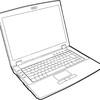We come across hospitals and non-profit organizations that care for people with paralysis who have experienced all or portion of their physique being incapacitated by the paralyzing attack. Due to a lack of motor coordination by their mind, these persons are typically unable to communicate their requirements because they can speak clearly or use sign language. In such a case, we suggest a system that enables a disabled person to move any area of his body capable of moving to broadcast a text on the LCD. This method also addresses the circumstance in which the patient cannot be attended to in person and instead sends an SMS message using GSM. By detecting the user part's tilt direction, our suggested system operates. As a result, patients can communicate with physicians, therapists, or their loved ones at home or work over the web. Case-specific data, such as heart rate, must be continuously reported in health centers. The suggested method tracks the body of the case's pulse rate and other comparable data. For instance, photoplethysmography is used to assess heart rate. The decoded periodic data is transmitted continually via a Microcontroller coupled to a transmitting module. The croaker's cabin contains a receiver device that obtains and deciphers data as well as constantly exhibits it on Graphical interfaces viewable on the laptop. As a result, the croaker can monitor and handle multiple situations at once.
翻译:我们经常遇到为瘫痪患者提供护理的医院和非营利组织。这些患者由于其身体被瘫痪攻击的全部或部分缺乏运动协调能力,因此通常无法明确表达他们的需求。在这种情况下,我们建议推出一种系统,使残疾人可以移动身体的任何部位来广播文字,同时该系统也解决了不能亲自看护患者的情况,因此可以通过GSM发送短信。我们推荐的系统通过检测用户部分的倾斜方向来实现。因此,患者可以通过互联网与医生、治疗师或家中或工作中的亲人进行交流。医疗中心必须不断报告特定案例的数据,例如心率。推荐的方法追踪病例身体的脉率和其他类似数据。例如,脉搏体积描记术用于评估心率。解码的周期数据通过与发射模块相连的微控制器不断传输。医生办公室中包含一个接收器设备,可以接收和解码数据,并在笔记本电脑上不断显示。因此,医生可以同时监测和处理多种情况。




